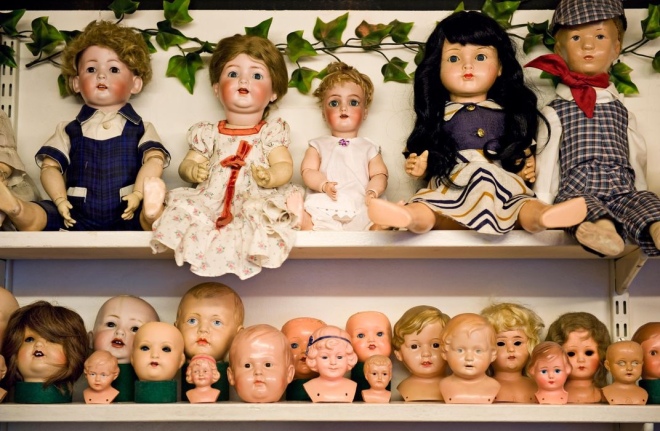“You can’t talk about creepy dolls without invoking the ‘uncanny valley,’ the unsettling place where creepy dolls, like their robot cousins, and before them, the automatons, reside. The uncanny valley refers to the idea that humans react favorably to humanoid figures until a point at which these figures become too human. At that point, the small differences between the human and the inhuman – maybe an awkward gait, an inability to use appropriate eye contact or speech patterns – become amplified to the point of discomfort, unease, disgust and terror. The idea originated with Japanese roboticist Masahiro Mori’s 1970 essay anticipating the challenges robot-makers would face. Although the title of the paper, ‘Bukimi No Tani,’ is actually more closely translated as ‘valley of eeriness,’ the word ‘uncanny’ hearkens back to a concept that psychiatrist Ernst Jentsch explored in 1906 and that Sigmund Freud described in a 1919 paper, ‘The Uncanny.’ Though the two differed in their interpretations – Freud’s was, unsurprisingly, Freudian: the uncanny recalls our repressed fears and anti-social desires – the basic idea was that the familiar is somehow rendered strange, and that discomfort is rooted in uncertainty.

“But the uncanny valley is, for scientists and psychologists alike, a woolly area. Given the resources being poured into robotics, there has been more research into whether or not the uncanny valley is real, if it is even a valley and not a cliff, and where exactly it resides. Thus far, results are not conclusive; some studies suggest that the uncanny valley does not exist, some reinforce the notion that people are unsettled by inhuman objects that look and act too human. These studies are likely complicated by the fact that widespread exposure to more ‘natural’ looking humanoid figures is on the rise through animated films and video games. Maybe like the Supreme Court standard for obscenity, we know uncanny, creepy humanoids when we see them?
“But before the 18th and 19th centuries, dolls were not real enough to be threatening. Only when they began to look too human, did dolls start to become creepy, uncanny and psychology began investigating.

“‘Doll manufacturers figured out how to better manipulate materials to make dolls look more life-like or to develop mechanisms that make them appear to behave in ways that humans behave,’ says Hogan, pointing to the ‘sleep eye’ innovation in the early 1900s, where the doll would close her eyes when laid horizontal in exactly the way real children do not (that would be too easy for parents). ‘I think that is where the unease comes with dolls, they look like humans and in some ways move like humans and the more convincing they look or move or look like humans, the more uneasy we become.'”
From The History of Creepy Dolls by the Smithsonian Institute
